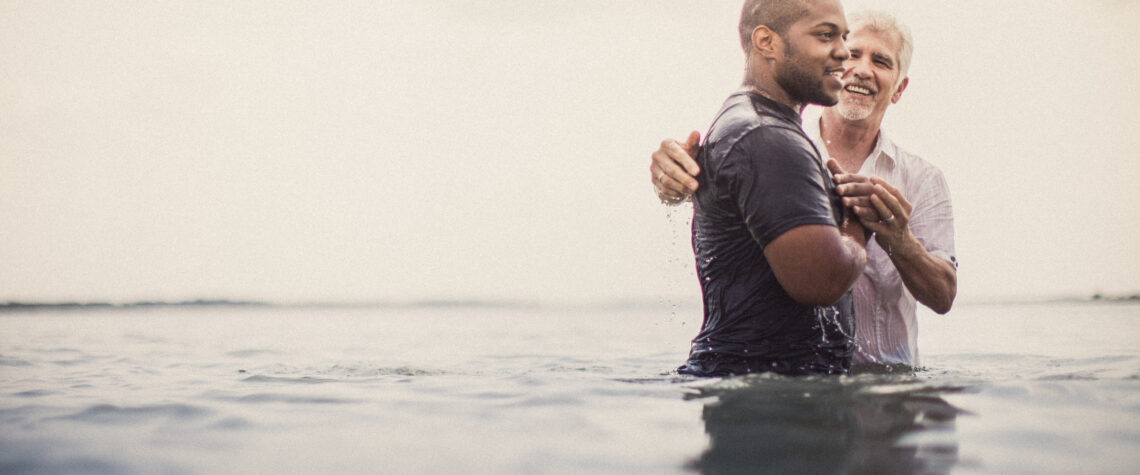Each year, Catholic families present their newborn for Baptism within weeks of birth, echoing the Jewish practice of presenting sons before the Lord on the eighth day. Both rites recognize the gift of new life and the promise of covenant. In Baptism, Christian parents entrust their child to God’s mercy, washing away original sin, and clothing the infant in Christ’s grace for the first time. In some cultures, the date of baptism is celebrated annually much like how we celebrate our birthday.
At the heart of the Baptismal Rite, the priest’s opening questions, “What do you ask of God’s Church for your child?” and “What name do you give them?”, forge the soul’s first covenant with Christ. The first question summons the parents to conscious intention, ensuring this sacrament is not a fleeting tradition but a deliberate embrace of new life in the Spirit, deliverance from sin, and incorporation into God’s family. The second question, richer than mere formalities, inscribes the child’s unique identity into the Body of Christ; in Scripture, names reveal vocation and promise, and by speaking it aloud, parents and community publicly welcome the child into a lifelong journey of faith. Together, these inquiries elevate Baptism from ritual to personal encounter, uniting parental commitment, ecclesial support, and divine grace for the child’s path to holiness.
While Catholics follow Baptism with Confirmation in adolescence, other traditions weave these sacraments together or rearrange their sequence. In the Eastern Orthodox Church, for example, Baptism is immediately followed by Chrismation (their form of Confirmation) and First Communion. From the first moment a child emerges from the water, they receive the seal of the Holy Spirit and a share in the Eucharistic life.
Anglican and Episcopal congregations also practice infant Baptism, but they too reserve Confirmation until young people reach an age of understanding. At that point, candidates publicly affirm the vows made on their behalf, receive the laying on of hands, and deepen their membership in the Body of Christ. This two-stage approach mirrors Catholic structure while placing professed consent before full sacramental participation.
Lutheran churches, rooted in the Reformation’s emphasis on grace alone, baptize infants to signal God’s unmerited favor. Many Lutherans then invite children, as early as age seven or eight, to “affirm” their Baptism through catechetical instruction. Though not always called Confirmation, this rite of affirmation allows youth to claim the promises already theirs by Baptism.
Methodists embrace both infant and believer’s Baptism, treating it as “an outward sign of an inward grace.” They do not separate Confirmation as a required sacrament but encourage a mature profession of faith through church membership vows. In many Methodist parishes, individuals, whether baptized at birth or later, publicly recommit themselves to Christ’s service at a Confirmation-style ceremony.
By contrast, Baptist, Pentecostal, and many non-denominational communities practice believer’s Baptism only. They delay the rite until a person is old enough to understand and confess faith in Jesus. Without a separate Confirmation ritual, Baptism itself becomes the moment of consent, a public declaration that one has died to sin and risen to new life in Christ.
The Church of Jesus Christ of Latter-day Saints (Mormons) takes believer’s Baptism even further, requiring each candidate to be at least eight years old. They view eight as the “age of accountability,” when a child can discern right from wrong and choose the gospel. After Baptism, new members receive the gift of the Holy Ghost through a laying on of hands, effectively their Confirmation.
Despite these differences, every Christian Baptism proclaims the same good news: water and Spirit unite us to be born again in the image of Christ, sharing in Christ’s death and resurrection. Whether sprinkled, poured, or fully immersed, whether at eight days, eight years, or eight decades old, the underlying reality is God’s gracious initiative. Families across traditions share a vision of new life, community, and hope that no human schedule can bind.
As Christian parents, grandparents, and godparents, we embrace both the diversity and unity of these practices. We honor our ancestral roots in Judaism, rejoice in the richness of global Christianity, and look forward to the day when every baptized soul stands clean before God, whether by the river Jordan or the local font. May the ripples of grace from our family’s Baptism nourish our children’s faith for generations to come.
If this is my last post, I want all to know there was only one purpose for all that I have written; to have made a positive difference in the lives of others.
Anthony “Tony” Boquet, Certified Professional Business Coach, A Modern Solutionary, the author of “The Bloodline of Wisdom, The Awakening of a Modern Solutionary” and “The Passion, Death, and Resurrection of Jesus Christ, A Devotional Timeline”














